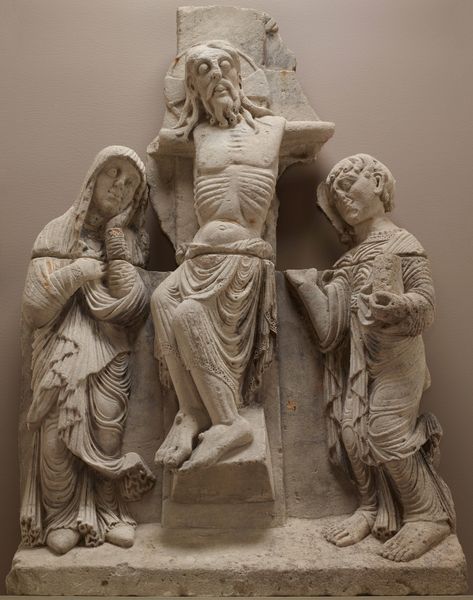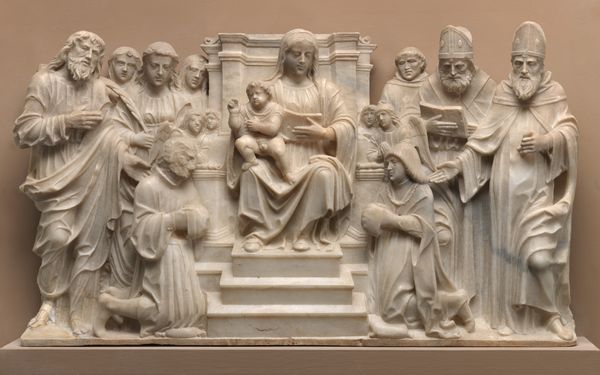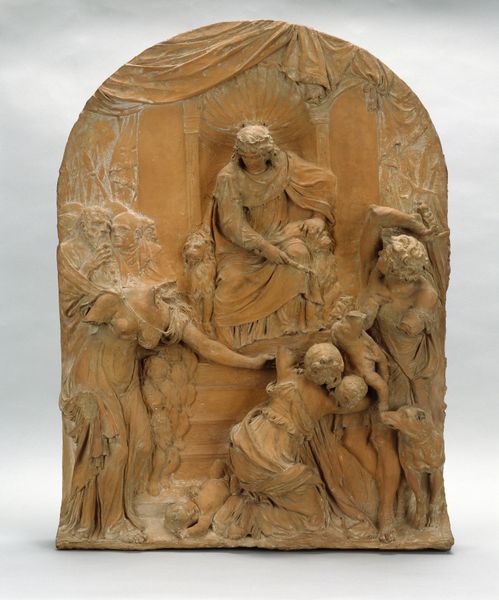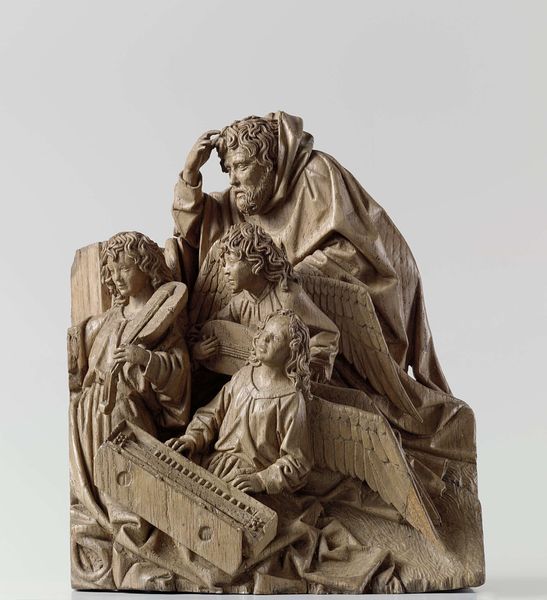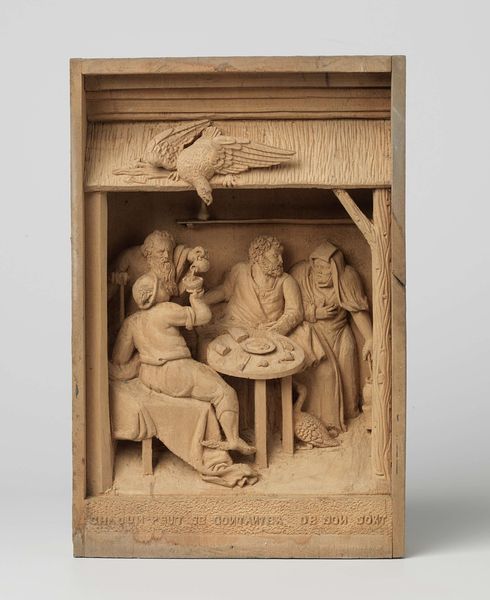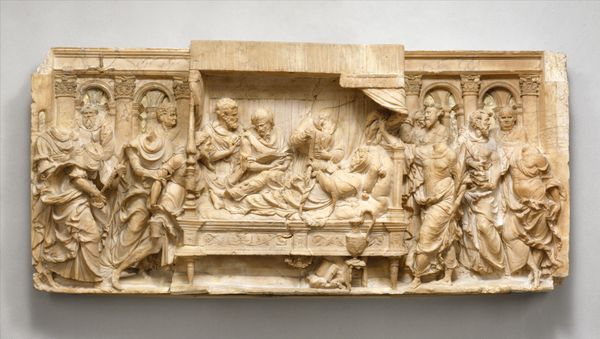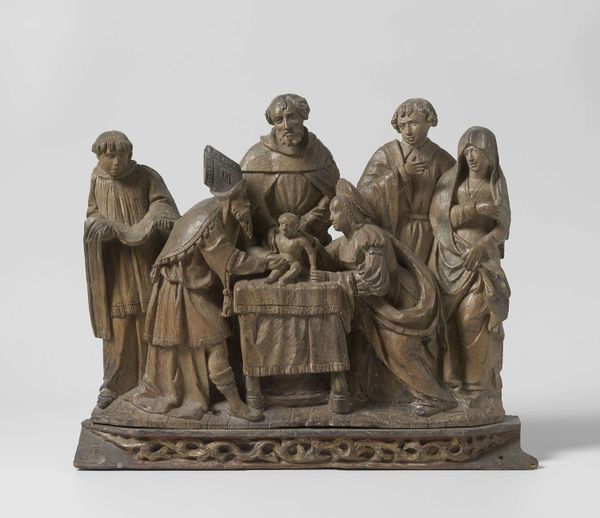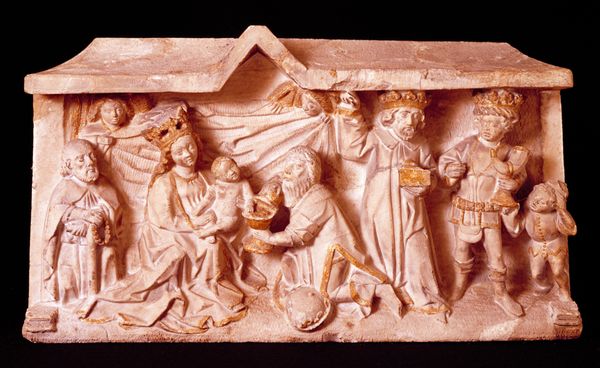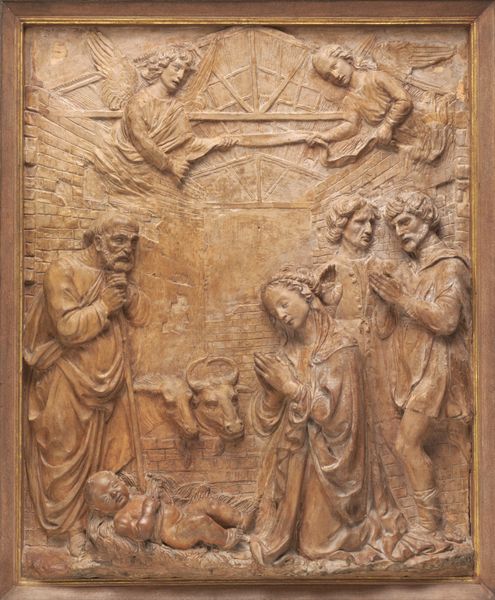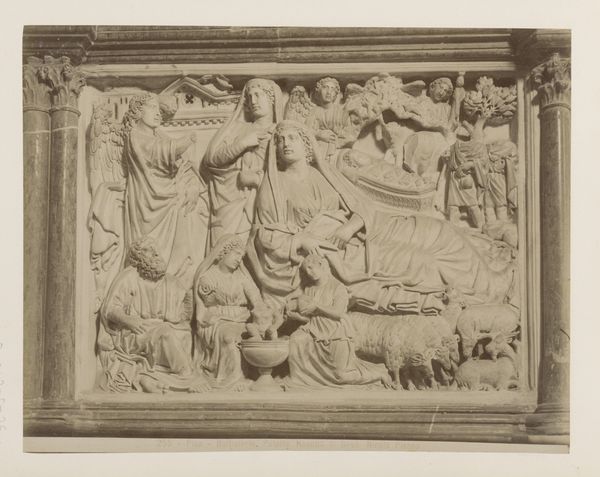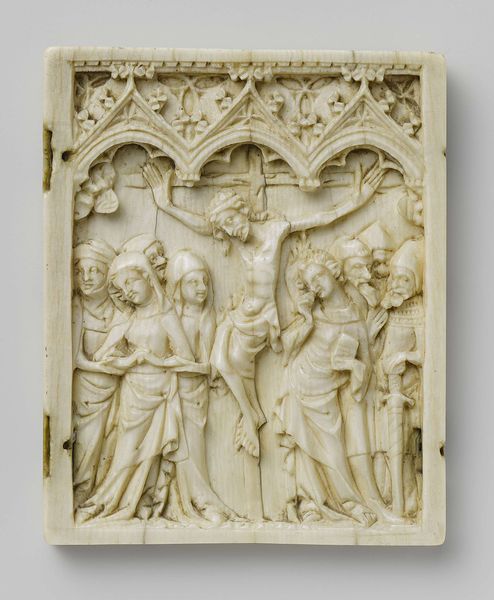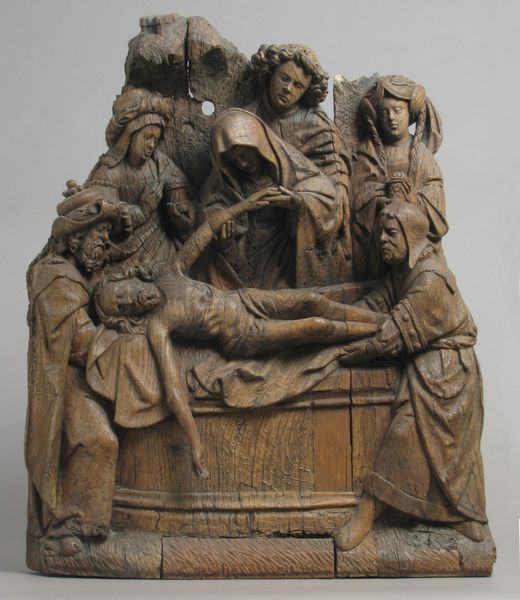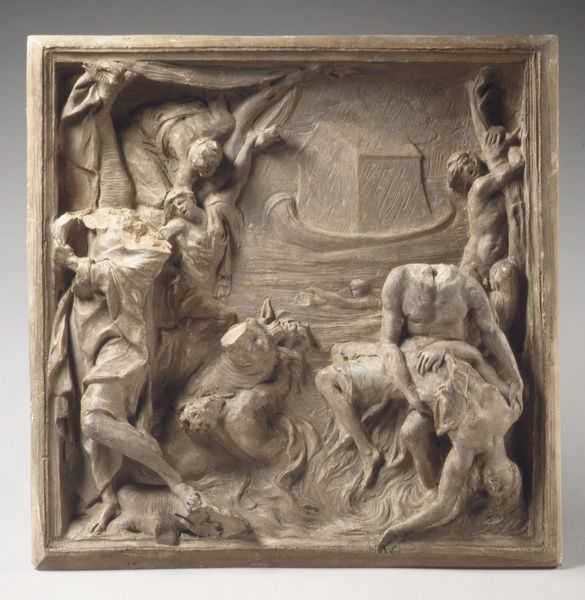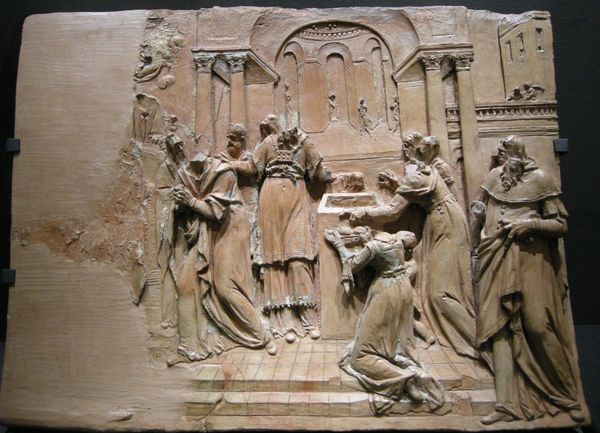
sculpture, wood
#
medieval
#
narrative-art
#
sculpture
#
figuration
#
sculpture
#
wood
#
northern-renaissance
Dimensions: height 52 cm, width 67.8 cm, depth 16.5 cm
Copyright: Rijks Museum: Open Domain
Curator: Before us stands "The Visitation," a work crafted around 1475-1477 by the workshop of Adriaen van Wesel. This sculpture, carved from wood, depicts a key biblical scene and currently resides here at the Rijksmuseum. Editor: The raw materiality of the wood is so striking! The unpainted surface lends it a quiet solemnity; you feel as though you’re encountering something ancient and deeply private. There’s a weight to the figures. Curator: The narrative itself focuses on the meeting of Mary and Elizabeth, both pregnant—Mary with Jesus, Elizabeth with John the Baptist. Consider how this interaction would resonate within the societal structures of the time. The sculpture was initially part of a large altar piece destined for a church. Editor: Exactly! Placing women at the heart of faith challenges institutional power. Their bodies become vessels not just of life but of revolutionary potential. Looking at Mary’s gaze, I find a defiance that counters more passive interpretations of the figure. It's clear how vital they are in the divine plan, something the establishment might be prone to overlook. Curator: Indeed. It’s fascinating how Van Wesel integrates elements of both late medieval and early Renaissance styles. The architectural details – a castle structure, foliage rendered in the round -- give an intriguing setting to a divine interaction that likely occurred elsewhere, perhaps more modestly. The northern European tendency for realism blends with Renaissance idealism in portraying these women. Editor: This intersection of styles tells us much about cultural change. Medieval artistry rooted in its function is being reshaped by early Renaissance sensibilities about individuals’ existence and emotional understanding. Note how the folds of their garments don't just depict cloth, but the shifting status of women in society. They may look contained, but their gathering creates space for shared hope. Curator: That's beautifully said. The way this artwork uses recognizable symbols – gestures, setting, even the wood itself – connects these holy figures to the everyday experiences of 15th century people in ways the wealthy or nobility may overlook. What began as religious narrative has morphed into an expression of solidarity. Editor: For me, “The Visitation” serves as a reminder of the potent social impact of marginalized stories. The potential of challenging institutions through narratives about gender and bodies remains relevant even now. Curator: I agree completely. Exploring art through that lens is critical, so thank you for offering your unique insights on Adriaen van Wesel's work, a testament to history and artistry intertwined.
Comments
No comments
Be the first to comment and join the conversation on the ultimate creative platform.
